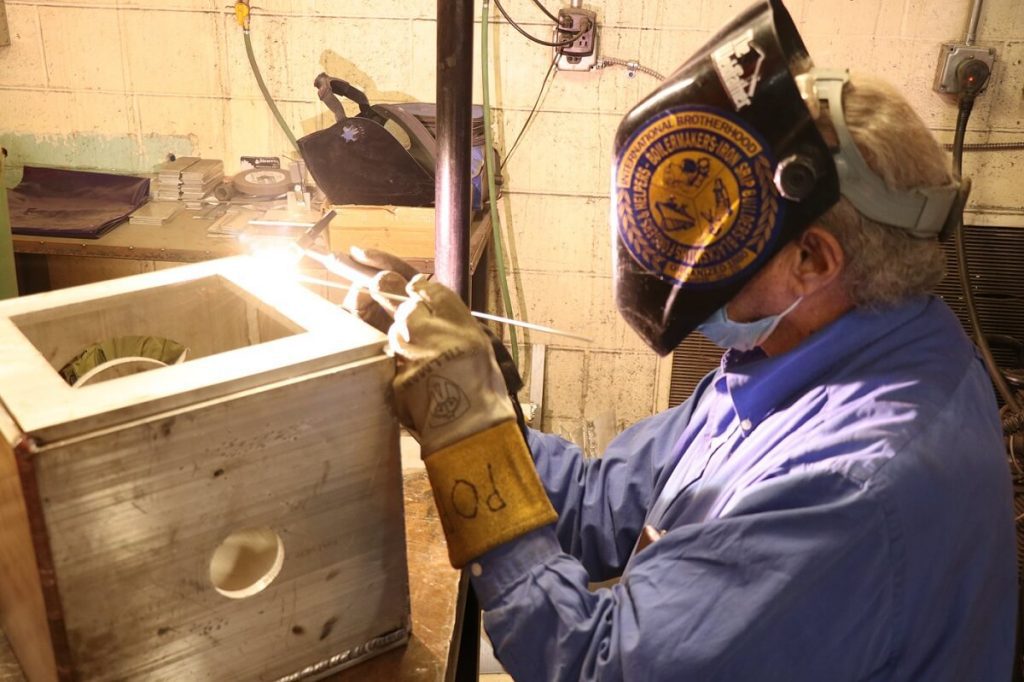Welder training is formal training that trade schools offer to aspiring welders. The welding, brazing, and soldering processes are part of welder training. The three, i.e., Welding, Soldering, and, Brazing, are all methods of fusing two or more metal pieces or any other given material. These three methods are used in different settings depending on the metal’s joint.
The training of a welder is essential to work with precision in all of the above procedures. In addition, a welding institution provide the proper guidance to become a qualified welder and set yourself apart from others. Numerous welding training school programs in Philadelphia provide great welding certification classes.
Welding
When you enroll yourself in a welder training program, you learn that welding is a process in which materials such as metal or thermoplastics are joined using high heat and allowing them to cool down, causing fusion. The joints created by welding can absorb all kinds of surface tensions and are very sturdy. As a result, they are most commonly used to weld joints in airplanes and automobiles.
However, welding can only join metals with the same chemical composition or properties. E.g., You cannot weld copper to iron. You must also remember to maintain welding temperatures in accordance with the metal. Too much high heat can change the composition of the metal.
Brazing
The American Welding Society classifies brazing as a liquid solid-phase bonding process. The joining of metals is done by using a melted filler metal into the adjoining metals to make permanent and sturdy bonds in brazing. It can join dissimilar metals like silver, gold, nickel, etc.
Brazing joints are not as sturdy as welding joints. Brazing needs a tiny joint gap for the capillary action to occur and allows the filler metal into the joint while the other parts are at the proper phase temperatures of 840 degrees Fahrenheit. The main difference between brazing and welding is that welding is done at a much higher temperature.
A trade school for welding makes the understanding of such concepts way easier.
Soldering
In soldering, a filtered metal can join two or more metal pieces together to create strong and long-lasting bonds. Soldering is done at a shallow temperature in comparison to welding which is below 840 degrees Fahrenheit. The main difference between soldering and brazing is that soldering occurs at a low temperature in comparison to brazing.

Education plays a vital factor in determining when you become a welder. For instance, some people do not opt for a welding course and directly learn at on-the-job training, whereas some opt for vocational courses such as welding programs. Therefore, it can take up to a few years to a few months, depending on the method.
Usually, a high school degree or an equivalent such as a GED certificate is the minimum qualification you will need to become an on-the-job training worker or enroll in a welding course.
Also, people who learn on-the-job training take years to become efficient welders in comparison to ones who take welding courses. Employers prefer a welder who has a certification from a good welding school. This is because of the expertise and technical knowledge the school can teach them. Also, the classroom hour experience helps them perform better on the job.
Welding has become one of the highest-paid trades in recent years in the U.S. The median entry-level wage is over $40,000 per year or about $20 per hour.
According to the American Welding Society, the welding industry will face a shortage of about 400,000 welders by 2024. The average salary for a welder is $24.49 per hour in Philadelphia, PA, one of the highest in a skilled trade.
Also, with the construction industry having a solid rise, demand for welders is increasing. Therefore, an aspiring student carefully selects a trade school because they play a vital role in their career.
Welding schools or technical schools typically charge $5,000-$15,000 for welding certification classes. Welder training earns you a certificate of completion. Tuition and training periods can vary depending on the location and specialization.

Welding is the third highest paying skilled trade with excellent career opportunities and prospects. The most significant advantage of skilled trade jobs is that they don’t require a college degree. Hence, it is a recommendation that students quickly enroll themselves in these certified welding welder classes to earn well.
Students must look for the best welding training school in Philadelphia to have a great start. The aspiring welders must enroll in an excellent technician school as it provides the fundamentals to training, and a career as a welder, and helps in getting jobs.
Read More: